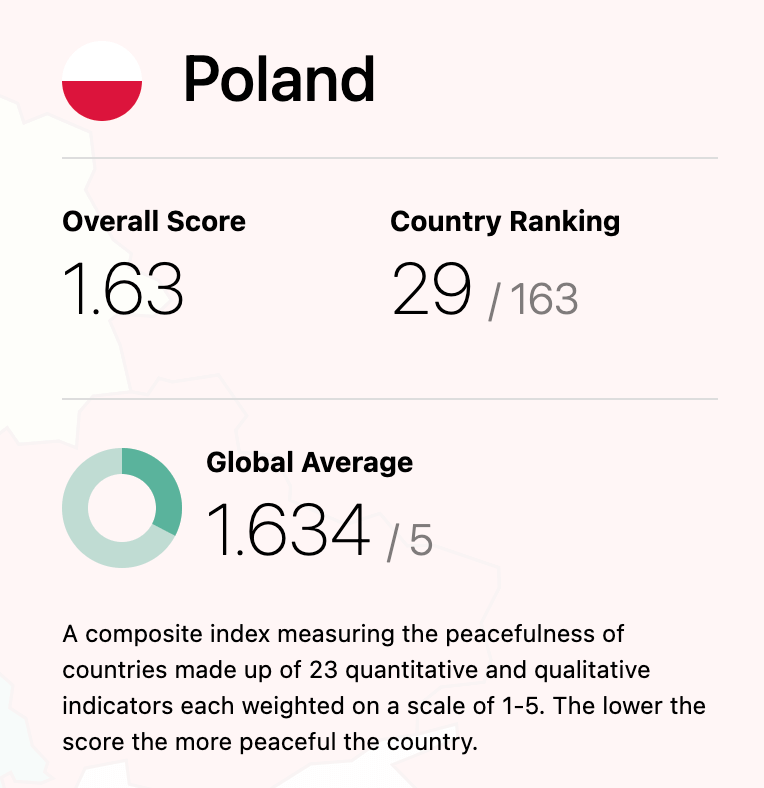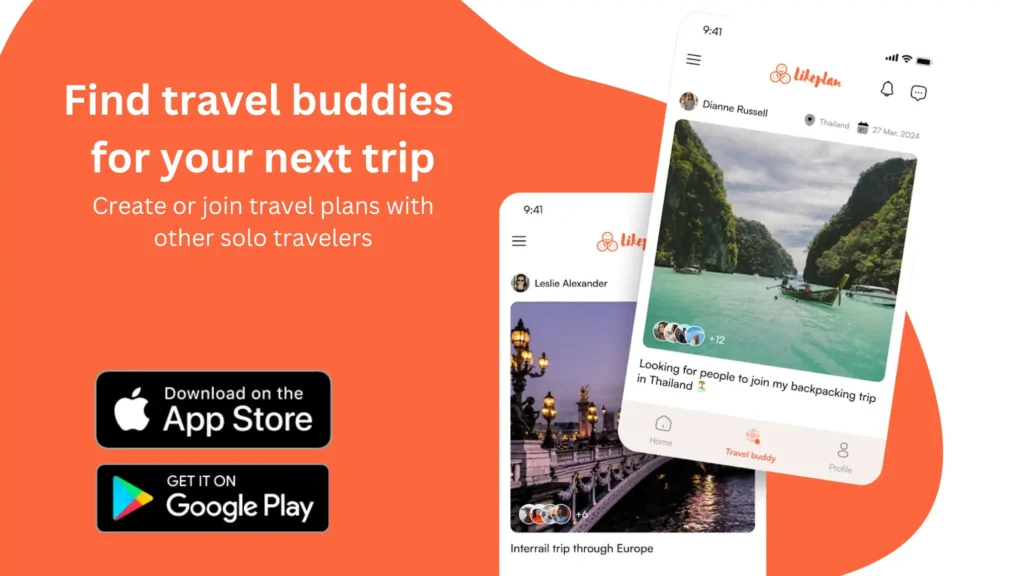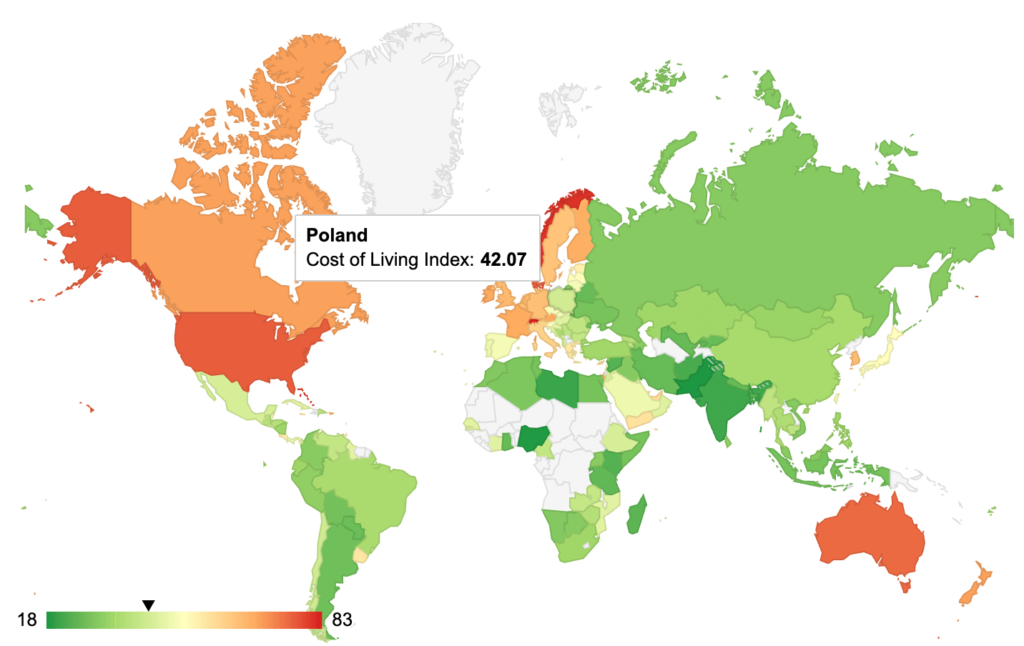Are you a solo traveler looking for your next adventure? Poland is a hidden gem that offers a unique blend of history, culture, and cuisine. This article will cover all the information you need to know before embarking on your journey.
We will also guide you through safety considerations, recommended budget and must-try dishes and food. Additionally, we’ll share some tips on how to meet other solo travelers during your stay.
Last updated on: 24-01-2024
How safe is Poland for solo travel?
Poland is generally considered a safe country for solo travelers. Polish cities are well-policed and have a low crime rate. Some key points to consider when traveling solo in Poland include:
- Transportation: Public transportation in Poland is well-organized, safe, and affordable. Uber is also available and reasonably priced.
- Dining: It is normal for both men and women to dine alone in Polish restaurants, bars, and coffee shops.
- Language: While the language barrier might be a concern, many locals are willing to help and appreciate when tourists try to speak a few words in Polish.

Poland is generally considered safe for solo travel, including for solo female travelers holds the 29th spot on the Global Peace Index.
The GPI is a creation of the Institute for Economics and Peace (IEP) and stands as the foremost global measure of worldwide tranquility.
What is the best time to visit Poland for solo travelers?

The best time to visit Poland for solo travelers depends on your preferences and the activities you want to do during your trip. Here are some general guidelines:
- Mid-season (May to June and September/October): This is considered the ideal time to visit Poland, as the weather is neither too hot nor too cold. During these months, you can enjoy various outdoor activities, such as forest hikes, swimming in lakes, kayaking, and sailing.
- Summer (July and August): This is the high season in Poland, with warm temperatures and sunshine. Beaches are crowded, and you can enjoy various water-based activities, such as rafting along the Dunjec Gorges or kayaking in the Mazurie Lake District. However, this period is also the busiest, so you may encounter larger crowds and higher prices.
- Winter (November to March): If you enjoy winter sports or festive activities, Poland offers skiing, snowboarding, and Christmas markets during this time. Keep in mind that temperatures can be cold, and daylight hours are shorter.
What are the most important holidays and festivals in Poland?
Poland has a variety of holidays and festivals throughout the year, showcasing its rich cultural heritage and traditions. Some of the most important ones include:
- Easter Celebrations: A significant religious event in predominantly Catholic Poland, marked by church services, family gatherings, and traditional food.
- Juwenalia (May): A student festival celebrated in many Polish cities, featuring parades, concerts, and other events.
- Constitution Day (May 3): A national holiday commemorating the adoption of Poland’s second constitution in 1791, with festivities and celebrations.
- Wianki (June 22): A midsummer festival in Krakow, featuring wreaths on rafts in the Vistula River, fireworks, and music.
- All Saints’ Day (November 1): A religious festival where Poles visit cemeteries to light candles and pay respects to their deceased loved ones.
- Independence Day (November 11): A national holiday celebrating Poland’s independence from Russian occupation in 1918, with parades, fireworks, and other events.
- St. Andrew’s Day (November 29): A day of partying before St. Andrew’s Day, with some closures.
In addition to these national holidays, Poland hosts various music, film, and cultural festivals throughout the year, such as the All Souls Jazz Festival in Krakow, the Warsaw International Film Festival, and the International Street Art Festival in Warsaw.
Keep these festivities in mind when determining the appropriate travel date, as this can affect the price of tickets and hotels.
How to meet other solo travelers in Poland?
To meet other solo travelers in Poland, consider joining local tours or activities that attract like-minded individuals. Another option is to stay at hostels or budget accommodations known for their social atmosphere.
Are you looking for an easy and safe way to connect with other solo travelers? Then make use of a travel buddy app. With Likeplan, you can search for travel buddies even before your trip, based on your destination and travel dates.
Create your own trips or activities, or join others’ events.

Is Poland expensive for solo travelers?
Poland is generally considered an affordable destination for solo travelers.

According to Numbeo, Poland holds the 74th spot on the Cost of Living Index by Country.
Here’s a breakdown of the costs you might encounter during your trip:
- Accommodation: A single room apartment in the city center can cost around €550 per month. Hostels are a budget-friendly option, with dorm beds available for as low as €15 per night during the off-season.
- Food: Groceries for one person per month can cost around €190. A meal at an inexpensive restaurant can cost around €6.50, while a three-course meal for two people at a mid-range restaurant can cost around €27.
- Transportation: A one-way public transport ticket costs around €1.65, and a monthly ticket is approximately €41.
- Co-working space: If you need a co-working space, the average daily fee is around €14, and the monthly fee is about €115.
To save money during your trip, consider traveling outside of the peak season, finding discount hotel rates, and using public transportation.
What are the best places to visit in Poland for solo travelers?
Poland offers a variety of destinations for solo travelers, each with its unique attractions and experiences. Here are some of the best places to visit in Poland for solo travelers:
1. Warsaw: The capital city of Poland, Warsaw, is known for its rich history, vibrant culture, and numerous museums. You can explore the historic Old Town, visit the Warsaw Uprising Museum, and enjoy the city’s lively nightlife.
2. Krakow: A popular destination for solo travelers, Krakow boasts a beautiful Old Town, Wawel Castle, and the historic Kazimierz Jewish district. You can also visit the nearby Auschwitz-Birkenau concentration camp memorial.
3. Wroclaw: This city in Lesser Poland is an alternative destination with a unique atmosphere, beautiful architecture, and a lively cultural scene. Wroclaw is also known for its numerous parks and the Wroclaw Fountain, which hosts a multimedia show.
4. Gdansk: A coastal city with a rich history, Gdansk offers a beautiful Old Town, the Gdansk Shipyard, and the Westerplatte peninsula, where World War II began. You can also visit the nearby Gdansk WW2 museum.
5. Tatra Mountains and Zakopane: If you’re into outdoor activities and nature, consider visiting the Tatra Mountains and the resort town of Zakopane. You can hike, ski, or simply enjoy the stunning views and local culture.
6. Torun: A picturesque city on the Vistula River, Torun is known for its well-preserved medieval Old Town, featuring Gothic architecture and the birthplace of astronomer Nicolaus Copernicus.
7. Poznan: Another city with a rich history and beautiful architecture, Poznan offers a lively cultural scene, numerous museums, and the picturesque Lake Malta.
What are the best ways to get around in Poland?
There are several ways to get around Poland, depending on your preferences and travel plans. Here are some of the best options:
- Trains: Poland has an extensive railway network, with most parts of the country accessible by train. Trains are a convenient and affordable way to travel between cities, and they are usually located near the city center, well-connected to the local transportation system.
- Buses: Buses are another option for long-distance travel, with various domestic and international routes available. They can be a more affordable alternative to trains, but may take longer and be less comfortable.
- Renting a car: Renting a car offers maximum flexibility and independence, allowing you to explore off-the-beaten-path destinations. However, driving in Poland can be slow and frustrating due to narrow highways and heavy traffic.
- Domestic flights: For shorter travel times and convenience, domestic flights are available between major Polish cities, such as Warsaw, Krakow, and Gdansk. Two main carriers offer domestic flights in Poland: LOT and Ryanair.
When planning your trip, consider using websites like ePodroznik to plan your travel around Poland by public transport.
5 Must-try dishes in Poland

Poland is known for its delicious and hearty food, which has been influenced by various cultures throughout history. Some of the best dishes in Poland include:
- Pierogi: These are thinly rolled-out dough filled with various fillings, such as meat, sauerkraut with mushrooms, spinach, or buckwheat. They can be served as an appetizer, main dish, or dessert.
- Bigos: A traditional Polish dish made from sauerkraut, meat, and vegetables, often cooked with wine or beer. It is considered a national dish in Poland.
- Kotlet Schabowy: A breaded and fried pork cutlet, often served with potatoes and vegetables. It is a popular dish in Poland and can be found in many restaurants.
- Golabki (Gołąbki): Cabbage rolls filled with cooked minced meat, often with onions and mushrooms, wrapped in a leaf of white cabbage, and stewed. They are typically served with either boiled potatoes or bread and poured over with a thick and creamy sauce.
- Kluski Slaskie (śląskie): Known in English as Silesian dumplings, these are made from unleavened dough and can be filled with various ingredients, such as potatoes, cheese, or sauerkraut.
These dishes are widely available in Polish restaurants and milk bars, offering a taste of the country’s rich culinary heritage.
Pepijn is the founder of Likeplan. He mainly writes about solo traveling. With over 10 completed solo trips, he writes from his own experience with the mission to encourage other people to go out and explore by themselves.

